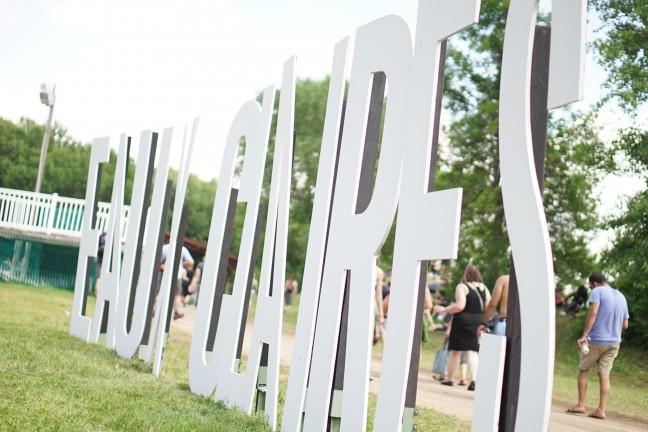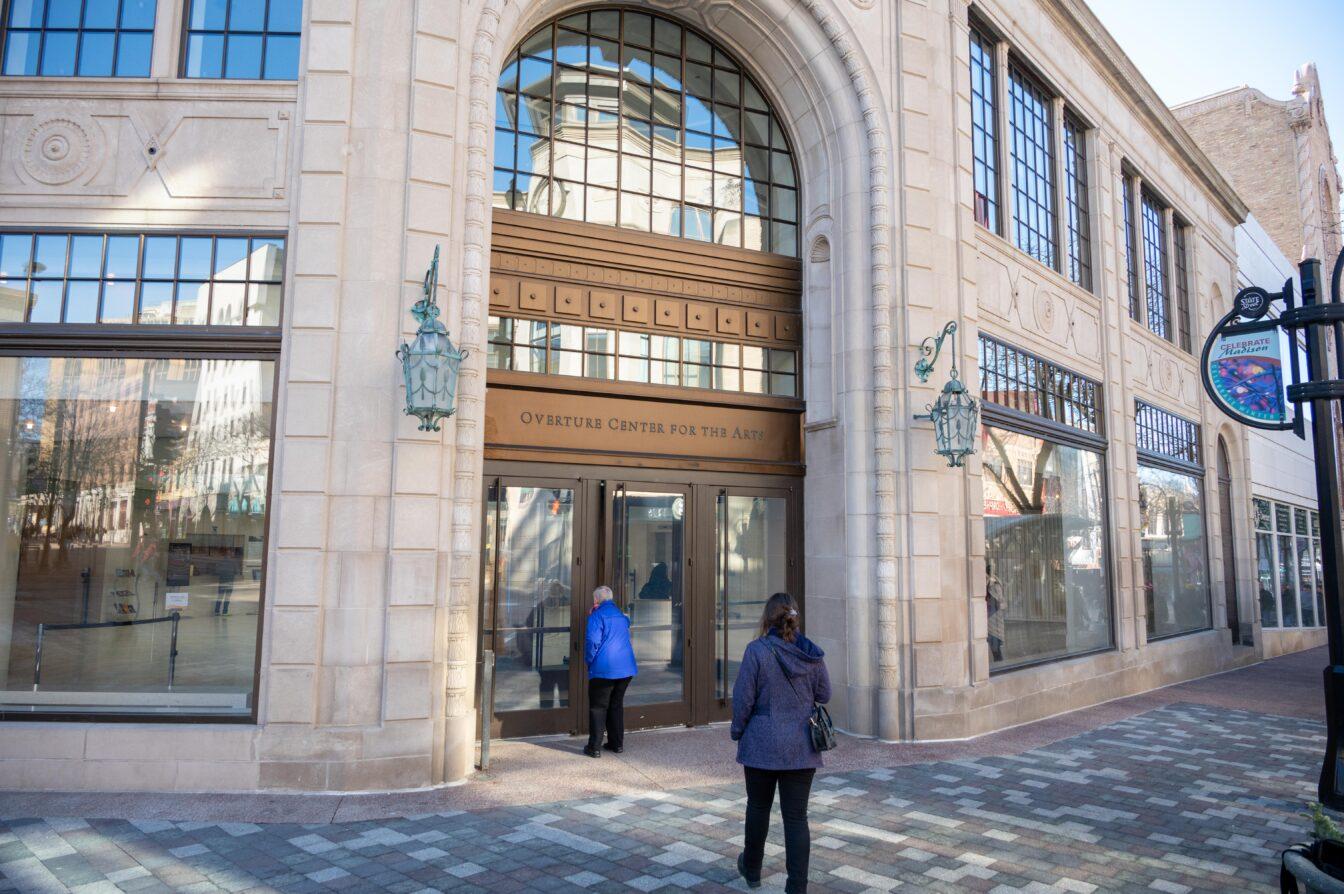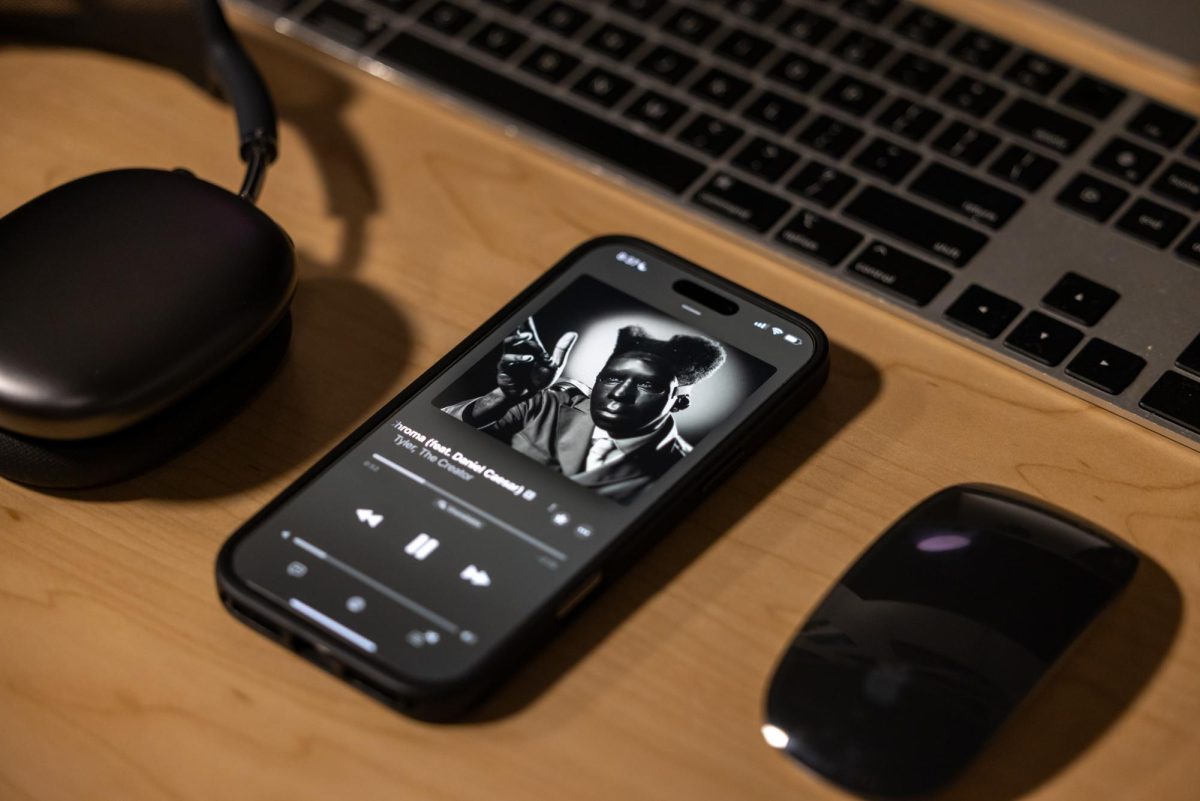Eaux Claires music festival is a fairly young one, but its popularity has already grown to impressive heights. Located in, you guessed it, Eau Claire, Wisconsin, its makers have put particular emphasis on the inclusivity of multiple art forms and community atmosphere.
The Badger Herald talked with the festival’s creative director, Michael Brown, about this year’s setup, music lineup and festival spirit.
The following interview was edited for style and clarity.

Marissa Haegele/The Badger Herald
The Badger Herald: Eaux Claires has an “ethos of encouraging participation across all disciplines of art.” Can you expand on what this means to you?
Michael Brown: I think more and more we want the festival to be a fine balance of these moments of togetherness where everybody is gathered as one, watching a show, so that everyone is experiencing the same highs. At the same time, when we’re not at those moments when everybody is gathered together, we specifically want people to feel like they are inside a community as opposed to an audience. What I mean by that is we want everybody to feel like, across the board, whether you’re artist, patron or vendor, we want everyone to feel like they’re participating in something more — it’s not just a voyeuristic kind of exercise.
We try to encourage our artists and everybody else that’s involved in producing the festival to somehow engage everybody so it doesn’t necessarily feel like the outside looking in. We want everybody to feel like they’re a part of it.
We do that in art projects and some of the musical projects, and we’ve specifically structured it so it’s a little less stand-offish. We want people in the spirit of improvisation and experimentation. We want people to see these vulnerable moments where artists are basically creating right there in front of them, so that everybody shares in that.
We’ve mentioned that concept before, and a lot of people take it quite literally as the audience is going to jump on stage and perform, and it’s like, no. What we mean is, we want this to be a communal performance experience so everybody feels like they’re in this once in a lifetime experience.
Twiddle shares insight gained from touring, music inspirations
BH: You have an open call for artist submissions. What does that look like at the festival and what do you do with the submissions that you get?
MB: I don’t want this to be an exclusive club of artists that gather together. I want every single person that’s going to the festival to feel like they also have a voice inside of it. I don’t want to tell people who the open-call artists are because I don’t want there to have to be a stigma involved. They are out there creating, and the purpose isn’t for the audience to know who they are.
The point is, if you’re an artist with a great idea, if we can incorporate it, we will try to. It is amazing to see all of the artists participate in the festival. Some of the most intriguing parts of the open call are actually artists who have participated in the festival before, and it’s not because they are inherently any better than anybody else, it’s that now they are wanting to create something even more inspirational. It does tend to feed itself to the community.
What I’m looking for is artists that don’t necessarily have a platform to create their art, like students in undergrad or grad school or somebody that’s out of school and doesn’t have that ability. It’s pretty exciting to see across the board — we had a mix of all of that.
Conversation Starter: Local Natives talk ‘Sunlit Youth,’ life on the road
BH: Is there a certain area where this art is displayed?
MB: When you first come to the festival, there’s a lower bowl. This section is where the two largest stages are. Food vendors and that kind of stuff are all centralized at another location. We spread stuff around to get people to go to parts of the grounds that they wouldn’t necessarily have a reason to go to.
What typically happens is if it’s just stages and bars and toilets, it creates this triangle everybody goes to. We want the arts in all its forms to be celebrated here, it’s not just music — it serves as a reason for people to get around to see something else, a little palette-cleansing adventure before you go see the next concert of the day.
There is a whole woods section used to translate another kind of feel where we’ve had other stages put in. This year, we’re really focusing more on the woods. There’s a lot of pieces of land that we haven’t really explored. Last year, we really started figuring out how to properly use a lot of our lower bowl area. So this year, it’s like, now we are going to learn from last year. Let’s explore that a little bit more.
BH: Eaux Claires has incorporated a literary element to the festival. Could you expand on that?
MB: When we first started the festival, Michael Perry, who’s one of Wisconsin’s greatest writers, happens to be Justin [Vernon’s] neighbor. Justin said from the very beginning, “Mike, you’re going to be the narrator of the festival.”
The exciting part is, it means whatever we want it to mean. Last year what had a lot of success of basically adding in written word as a powerful art form. Within music written word is already a super important aspect of the songwriting experience. Outside of that, there is a way to have these moments and to express and engage yourself in literary art while you’re being immersed in all these other things at the festival. We try to make people realize that and inspire them by the time they walk out of the festival.
BH: Was there a certain thematic purpose to the lineup this year? What was that deciding process like?
MB: This year is the most exciting of all three. Almost every single artist on our bill specifically reached out and said they want to be a part.
In previous years, we put together this really eclectic, kind of genre-blending creation that Erin and Justin did. In the past we tried to show all of these different genres and represent everything in the musical lineup.
This year, it’s much more accepting — these are the artists that wanted to be here and wanted to participate and are going to elevate this event beyond what a normal music festival is. I think that was kind of one of the real guiding forces is that willingness and that pure, creative want to be a part of something.
When you look across the bill, you’ll kind of see a lot of custom projects and a lot of stuff that wouldn’t happen anywhere else. To me, that’s one of the most exciting things about the festival — this isn’t just a homogenous creation of other large festival lineups that are happening. Even artists on our bill that are going to go play every other festival, Chance for example, he’s gonna do a show here, in Eaux Claire, that he’s not gonna do at any other festival.

BH: How does it feel to be an outlet for some of those lesser-known artists on the bill?
MB: Man, I think it’s great. The first year I really feel like our immediate group of artists that collaborate together, perform together. There’s been several bands that have really grown out of that — Sylvan Esso is a prime example. There’s definitely bands where people say, “I’ve never heard of this person,” and what they don’t realize is the connection is either that the band has been incubating in Justin’s studio for three weeks during the year, that band collaborates on projects or Erin even produced that record. There is no random band that really has no reason or inspiration to be there. Everybody is connected in a web.
Madison band greenhaus channels real life experiences, angst in latest releases
BH: How has the festival evolved even in this short time?
MB: With each year we’re taking a step further towards what we hoped it would be. Ultimately, we want this to be a community driven event where people aren’t necessarily coming because of a certain band. We want them to come just because they want to be surrounded by the spirit of the festival.
We hope the artists chosen to participate that year make it that much more exciting. It’s going to keep evolving in that direction. If we ever get to the point where we don’t release a lineup per se — that is something we would love more than anything — is for everybody to come to the festival just to experience it. It’s a challenging concept for people who go to music festivals, and it’s especially challenging to people who don’t go to a lot of concerts. But in trying to make this much more of a community event, I think ultimately what we’re trying to do is reinforce the notion that during the summertime special things happen in this area. We want everybody to get together and experience that.
BH: Refocusing and reconfiguring are goals of the festival this year. Can you expand on that?
MB: Last year was like our maximize everything year — we bombarded it with bands. During the weekend, everybody talked to everybody, saying, “hey, did you see this?” and it was, “no, I didn’t get a chance to see that.” It worked great last year. It was super interesting inspire this concept of choose your adventure and get to explore everything. But what we realized is there were so many great moments we were creating that ourselves and other people didn’t get to experience. This year, the thought was to focus everything. There are some projects we’re doing that for as much work and uniqueness that go into it, if everybody coming didn’t experience that, it would be a real bummer.
BH: What is the relationship like that you’ve formed with Eau Claire as a city?
MB: The city, the county and specifically the university have been amazing partners beyond what we ever could have thought. The state itself is also highly interested in creating events of this nature.
BH: What do you want people to be thinking when they walk away from the festival?
MB: I want them, without question and without even thinking about it, to not even know what artists are playing next year, to want to come back.

Marissa Haegele/The Badger Herald














